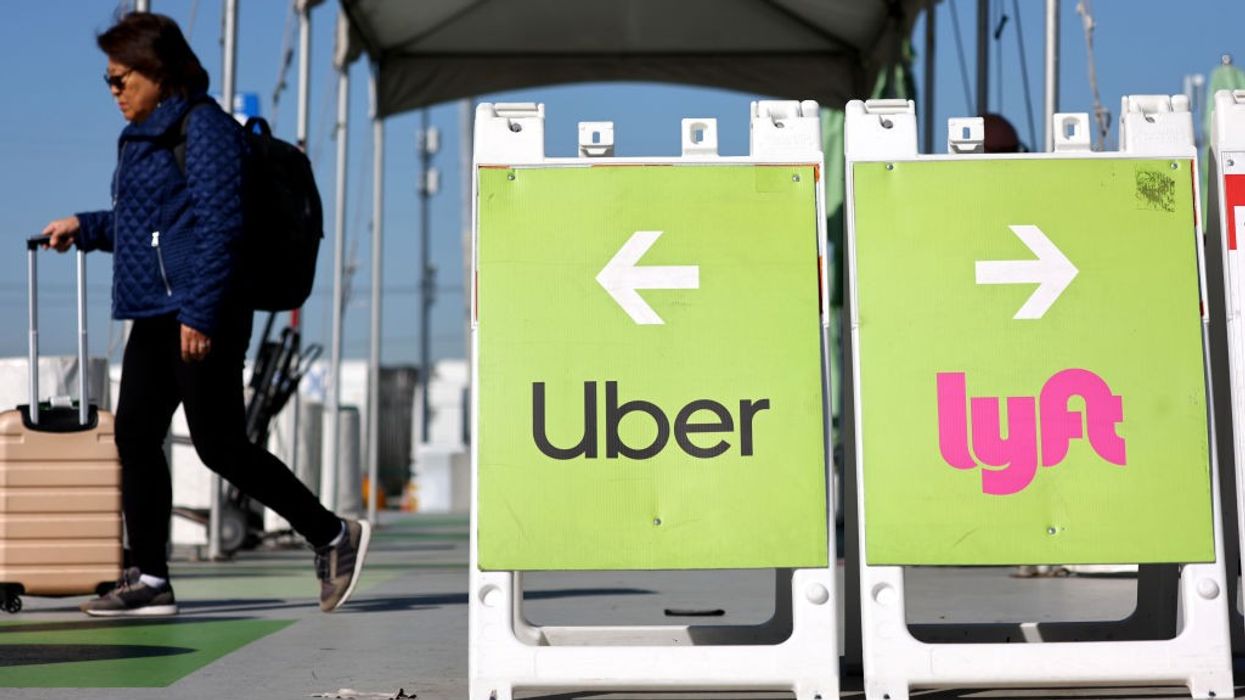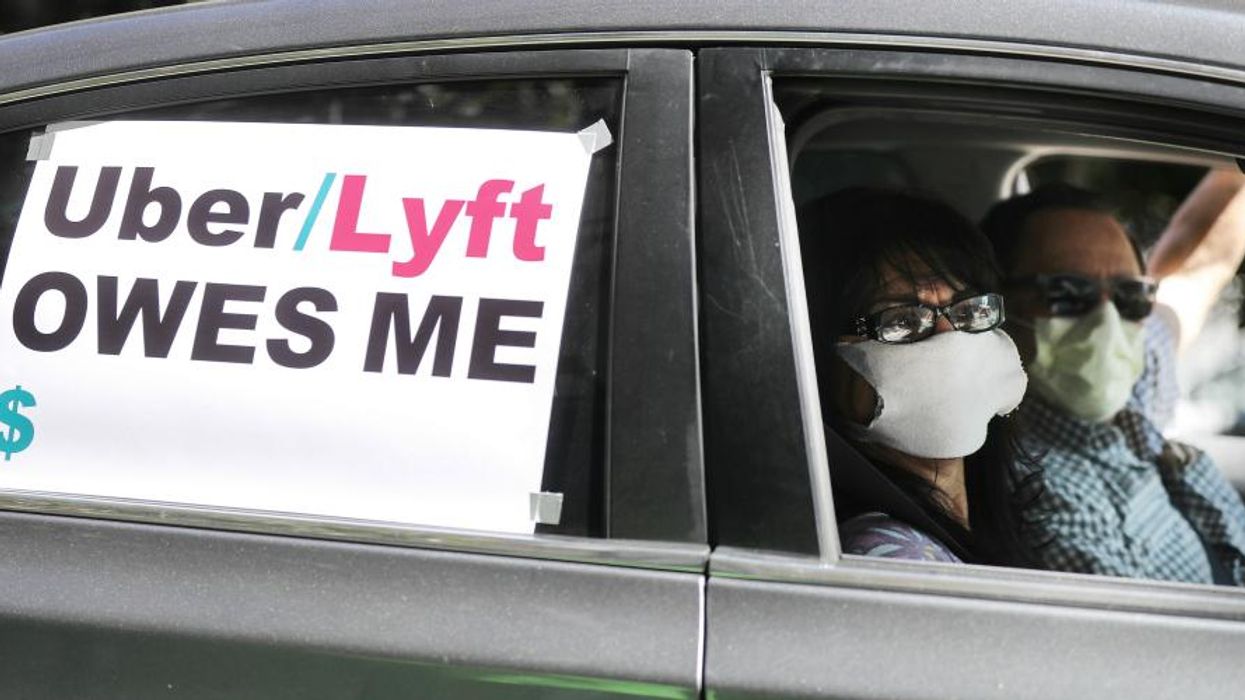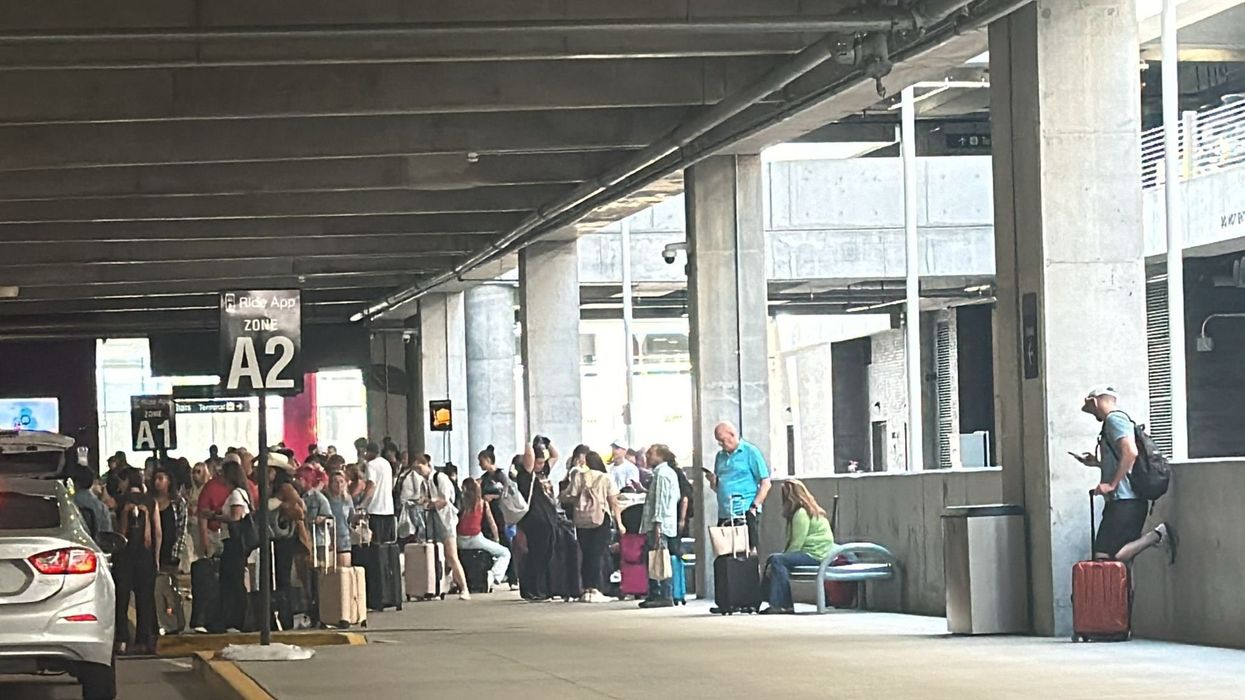Lyft, Uber Drivers Banned From Tennessee Airport After Caravan for Pro-Worker Bill
"Uber, Lyft, and Metro Nashville Airport Authority are engaging in an inappropriate and malicious alliance to destroy dozens of livelihoods," said the Tennessee Drivers Union.
A Tennessee union announced Monday that 34 Uber and Lyft drivers received messages "informing them that they had been permanently banned" from working at Nashville's airport after joining scores of workers for a peaceful caravan there last month to support a state bill that would impact the companies.
The Tennessee Drivers Union (TDU) said in a statement that some participants, "including those in the passenger's seat not driving," were banned from providing rides at Nashville International Airport following the February 14 action, during which "participating Uber and Lyft drivers had their apps turned off."
In a message to one Uber driver obtained by Common Dreams, the company said that "Nashville International Airport (BNA) notified us that you conducted a pickup on the arrivals level of the terminal. Please note that all pickups must occur in the Uber-designated zone."
"Due to the nature of the incident, the airport is restricting certain driver-partners from accepting rides or dropping passengers off at BNA permanently, pursuant to the terms of Uber's agreement with the airport," Uber continued. "Your account appeared on the list. For that reason, your account has been permanently blocked from operating at BNA. Contact the airport for more information."
A message to a Lyft driver similarly said that "it has been reported that you were conduct detrimental to the orderly operation of the airport. That being said, at the request of the airport, you are prohibited from operating on BNA airport property indefinitely."
"To prevent future suspensions, carefully review the BNA rules and regulations," Lyft added. "Please note, citations may be given if you operate on BNA property during your suspension, and you will be responsible for paying them."
Lyft and Uber have not responded to Common Dreams' requests for comment on the bans, which come as working people face high costs and a billionaire-led assault on the federal government.
TDU said Monday that "Uber, Lyft, and Metro Nashville Airport Authority are engaging in an inappropriate and malicious alliance to destroy dozens of livelihoods. The airport is one of the only opportunities for ride-share drivers to make barely above minimum wage."
"This is an attack against dozens of workers, their families, and their communities," the union continued, noting the millions of dollars in fees the airport gets from drivers and Metro Nashville Airport Authority CEO Doug Kreulen's $600,000 salary.
As Common Dreams reported last year, TDU has sounded the alarm about working conditions for drivers at BNA. Union members kicked off Labor Day weekend in 2024 with a strike to draw attention to demands including a cap on the number of ride-share drivers in the area, an expansion of their airport lot, and clean, working bathrooms on-site.
TDU said Monday that "this retaliation isn't a mistake," arguing that "Uber and Lyft are threatened" by Tennessee House Bill 879/Senate Bill 818, introduced last month by state Rep. Rush Bricken (R-47) and Sen. Joey Hensley (R-28).
The bill text begins by highlighting that "Tennessee is the only state in the Southeast that allows out-of-state ride-hail drivers to operate within the state, while Tennessee ride-hail drivers may not work in surrounding states."
"Tennesseans who live and work in our communities, contributing directly to our local economy, struggle to compete with an oversaturated market of out-of-state drivers," the legislation explains, calling for "a basic licensing regime."
The bill would require ride-hail drivers operating in the state to have a "transportation network license," which would require a Tennessee driver's license, or proof of residency in DeSoto County, Mississippi, or Crittenden County, Arkansas.
Companies that allow drivers to provide rides without a Tennessee-issued transportation network license would be hit with a $1,000 penalty per violation and could ultimately be banned from operating in the state.


